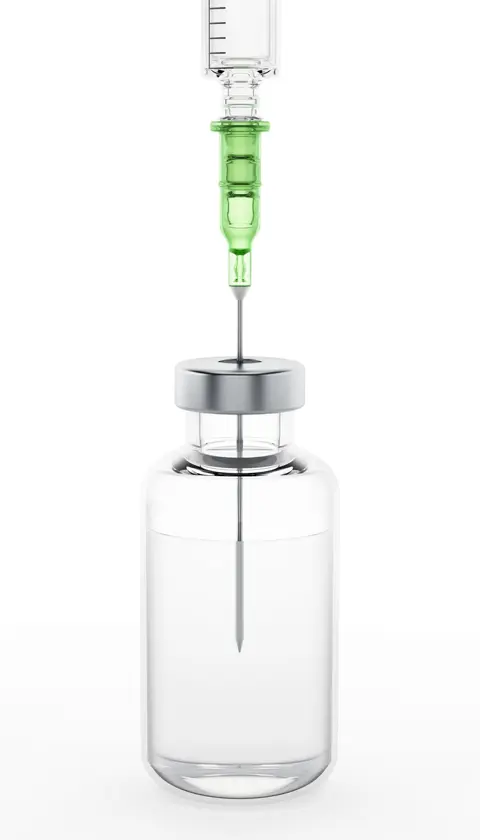
Rebecca Chandler
@RebeccaChandle1
Medical Doctor, UMC

Illustration: iStock (modified)
COVID-19 is one of the most disruptive events in history and a threat to public health. In the rush for treatments and vaccines, how do we keep sight of the need to ensure safety?
Today, we find ourselves living the pages of the next generation’s history books. A global pandemic, long predicted by experts in the fields of infectious diseases and global public health, has arrived and brought the life to which we had grown accustomed to an abrupt halt. This tiny virus has proven to pack a mighty punch, leaving governments from the richest to the poorest countries struggling to both care for the sick and protect healthcare workers from infection. Complicating such challenges are grave impacts to the global economy, whose effects will last long after the outbreaks of disease are brought under control.
“What is the role of pharmacovigilance in a pandemic of this magnitude? The need for our expertise has been evident from the first days it became clear that the novel coronavirus SARS-CoV-2 would encircle the globe. But in which areas can we, the pharmacovigilance community, make the most important contributions?”
Monitoring the safety of medicines is an obvious top priority. Several therapies with the potential to treat coronavirus infections have been identified and are currently being deployed in many countries. New drugs, such as remdesivir, are being tried and several old drugs, such as hydroxychloroquine and lopinavir/ritonavir, are being repurposed. Already, reports of suspected adverse drug reactions for some of these therapies have reached VigiBase, the global database of individual case safety reports, managed by Uppsala Monitoring Centre. Moreover, multiple vaccines of different types are under development, and the first participants in clinical trials have received injections. Given the vast scale of vaccination programmes likely to result – should any successful vaccine candidates emerge – monitoring and detailed reporting of all adverse events will be vital.
In the midst of this complex and urgent activity, a valuable opportunity arises to bring pharmacovigilance closer to healthcare systems. Treatment decisions for questions as yet unanswered by randomised clinical trials will have to be based on available observational data, such as that reported into spontaneous adverse event databases. Timely review of the incoming data and real-time signal detection can provide important safety information that healthcare providers desperately need. Therefore, ensuring and supporting the collection of high-quality data from adverse event reports will be essential responsibilities of our daily work.

“Given the vast scale of vaccination programmes likely to result ... monitoring and detailed reporting of all adverse events will be vital.”
Risk communication, difficult under normal circumstances, will be an even greater challenge given the amount of uncertainty that surrounds all aspects of the pandemic. The near universal lack of experience in managing pandemic responses from a public health perspective has been revealed by the different approaches taken by countries to containment and mitigation strategies and the range of regulatory recommendations for treatment options. In our hyper-connected world, with its 24-hour news cycle, the public is aware of the lack of agreement between different governmental authorities and between experts within individual countries, so transparency and honesty in the communication of uncertainties is absolutely imperative. All of us need to be vigilant about detecting false information and patient in providing explanations and corrections that can help prevent harm.
Sharing and collaboration both within and beyond our pharmacovigilance community will also be integral. We may need to support our pharmacovigilance colleagues in lower income countries, as they will need to manage the same challenges with far more limited resources. By sharing knowledge and insight into regulatory decisions, as well as communication materials and social media campaigns, we can help to lighten the burden on the staff in many of the smaller national pharmacovigilance centres throughout the world. Pharmacovigilance experts can collaborate with other scientific organisations to demonstrate the value of spontaneous reports as a form of real-world data. And we can combine queries of spontaneous databases with real-time observational studies from big data networks of insurance claims and electronic healthcare records to allow for more efficient evidence generation and explore any medicines safety issues that arise.
The COVID-19 pandemic has created an unprecedented global challenge. However, even given the justifiable urgency with which governments and healthcare systems tackle this challenge, we cannot afford to lose sight of the importance of patient safety. At this time, perhaps more than ever before, pharmacovigilance experts have a vital role demonstrating how our expertise, knowledge, and methodologies can help protect the safety of patients worldwide.
Read more:
Over 500 attendees from 80+ countries met in Cairo at ISoP 2025, reflecting on pharmacovigilance progress and shaping strategies for its future.
10 December 2025
Patient engagement was a hot topic at the fireside chat held during this year’s ISoP mid-year symposium.
24 June 2025
Pharmacovigilance has come a long way in helping us link medicines to their side-effects; with the help of pharmacogenomics it can go even further.
05 February 2025